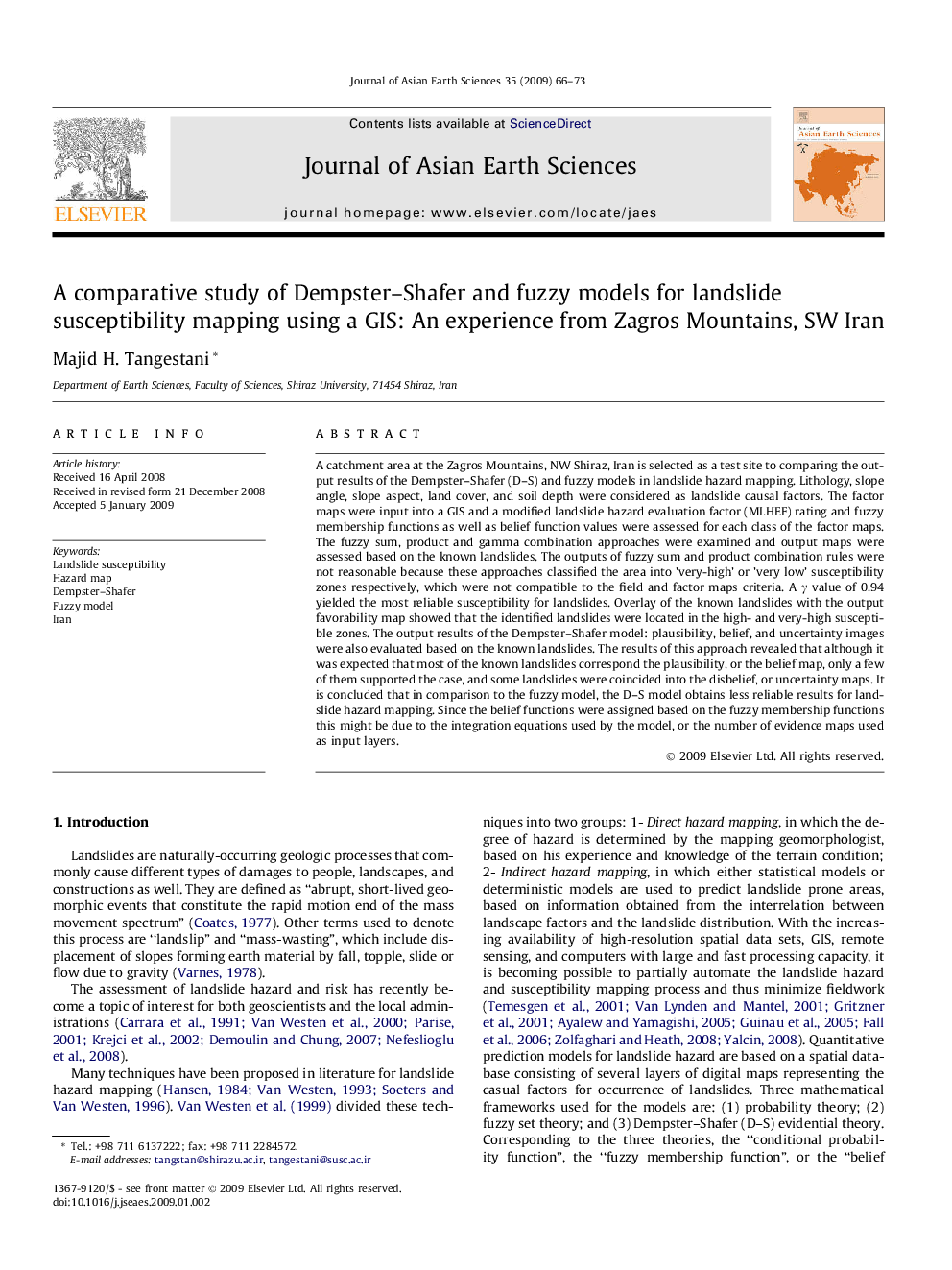| کد مقاله | کد نشریه | سال انتشار | مقاله انگلیسی | نسخه تمام متن |
|---|---|---|---|---|
| 4732083 | 1356841 | 2009 | 8 صفحه PDF | دانلود رایگان |
عنوان انگلیسی مقاله ISI
A comparative study of Dempster-Shafer and fuzzy models for landslide susceptibility mapping using a GIS: An experience from Zagros Mountains, SW Iran
دانلود مقاله + سفارش ترجمه
دانلود مقاله ISI انگلیسی
رایگان برای ایرانیان
کلمات کلیدی
موضوعات مرتبط
مهندسی و علوم پایه
علوم زمین و سیارات
زمین شناسی
پیش نمایش صفحه اول مقاله

چکیده انگلیسی
A catchment area at the Zagros Mountains, NW Shiraz, Iran is selected as a test site to comparing the output results of the Dempster-Shafer (D-S) and fuzzy models in landslide hazard mapping. Lithology, slope angle, slope aspect, land cover, and soil depth were considered as landslide causal factors. The factor maps were input into a GIS and a modified landslide hazard evaluation factor (MLHEF) rating and fuzzy membership functions as well as belief function values were assessed for each class of the factor maps. The fuzzy sum, product and gamma combination approaches were examined and output maps were assessed based on the known landslides. The outputs of fuzzy sum and product combination rules were not reasonable because these approaches classified the area into 'very-high' or 'very low' susceptibility zones respectively, which were not compatible to the field and factor maps criteria. A γ value of 0.94 yielded the most reliable susceptibility for landslides. Overlay of the known landslides with the output favorability map showed that the identified landslides were located in the high- and very-high susceptible zones. The output results of the Dempster-Shafer model: plausibility, belief, and uncertainty images were also evaluated based on the known landslides. The results of this approach revealed that although it was expected that most of the known landslides correspond the plausibility, or the belief map, only a few of them supported the case, and some landslides were coincided into the disbelief, or uncertainty maps. It is concluded that in comparison to the fuzzy model, the D-S model obtains less reliable results for landslide hazard mapping. Since the belief functions were assigned based on the fuzzy membership functions this might be due to the integration equations used by the model, or the number of evidence maps used as input layers.
ناشر
Database: Elsevier - ScienceDirect (ساینس دایرکت)
Journal: Journal of Asian Earth Sciences - Volume 35, Issue 1, 2 June 2009, Pages 66-73
Journal: Journal of Asian Earth Sciences - Volume 35, Issue 1, 2 June 2009, Pages 66-73
نویسندگان
Majid H. Tangestani,